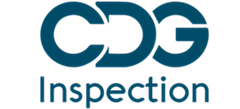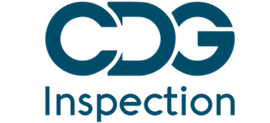A cGMP (current Good Manufacturing Practices) audit is a critical evaluation process conducted by regulatory agencies or external organizations to assess pharmaceutical manufacturing facilities’ compliance with established quality standards and regulations. In recent years, there has been a shift towards implementing risk-based approaches in pharmaceutical manufacturing to enhance product quality, patient safety, and overall efficiency. This shift aligns with the principles outlined in the International Council for Harmonization (ICH) Q9 guideline on Quality Risk Management. A cGMP audit’s assessment of the implementation of risk-based approaches involves evaluating how well a pharmaceutical manufacturer identifies, evaluates, controls, and communicates risks throughout the manufacturing process. This essay explores the key components and stages of a cGMP audit that pertain to risk-based approaches in pharmaceutical manufacturing.
Introduction to cGMP Audits and Risk-Based Approaches
cGMP regulations serve as a foundation for ensuring the quality, safety, and efficacy of pharmaceutical products. They outline the minimum requirements that manufacturers must adhere to in terms of facilities, equipment, processes, and documentation. Over the years, there has been a realization that a one-size-fits-all approach to manufacturing regulation is not sufficient to address the complexities and variations within the industry. This realization has led to the incorporation of risk-based approaches, where manufacturers identify and manage potential risks that could impact product quality or patient safety.
Key Components of a cGMP Audit Assessing Risk-Based Approaches
1. Risk Assessment and Identification
The audit begins by evaluating the manufacturer’s risk assessment processes. This involves assessing whether the manufacturer identifies potential risks associated with various aspects of their operations, such as raw materials, manufacturing processes, equipment, and personnel. Auditors examine whether risk assessment methodologies are scientifically sound, comprehensive, and up-to-date. They also assess whether the manufacturer considers historical data, expert knowledge, and potential failure modes when identifying risks.
2. Risk Evaluation
During this stage, auditors assess how well the manufacturer evaluates identified risks. This involves examining the criteria used to assess the severity, likelihood, and detectability of each risk. The audit evaluates whether the manufacturer’s risk evaluations are consistent and rational. Additionally, auditors assess whether risks are categorized based on their significance, enabling the allocation of appropriate resources for risk mitigation.
3. Risk Control and Mitigation
Auditors examine the strategies and measures that the manufacturer has put in place to control and mitigate identified risks. This includes evaluating the effectiveness of control measures, such as process design, equipment validation, and environmental monitoring. The audit assesses whether these controls are proportional to the level of risk and whether they are properly implemented and monitored.
4. Communication and Documentation
Effective communication of risks and risk management strategies is crucial within a pharmaceutical manufacturing facility. Auditors review whether the manufacturer has clear and transparent processes for communicating risks to relevant stakeholders, both within the organization and to regulatory authorities. Additionally, the audit assesses whether risk-related documentation, including risk assessments, mitigation plans, and monitoring results, is accurate, complete, and easily accessible.
5. Continuous Improvement
Continuous improvement is a fundamental aspect of risk-based approaches. Auditors evaluate whether the manufacturer has mechanisms in place to monitor the effectiveness of risk mitigation strategies and to make adjustments as needed. This involves assessing whether the manufacturer analyzes data and feedback from various sources to identify trends, emerging risks, or areas for improvement.
Stages of a cGMP Audit Assessing Risk-Based Approaches
A cGMP audit assessing the implementation of risk-based approaches in pharmaceutical manufacturing typically involves several stages:
1. Pre-Audit Preparation
Before the audit, the manufacturing facility prepares by reviewing its risk-based approach implementation, gathering relevant documentation, and ensuring that key personnel are available for discussions with auditors.
2. On-Site Inspection
The audit team visits the manufacturing facility to conduct a comprehensive inspection. This involves reviewing documentation, observing processes, and interviewing personnel involved in risk management and manufacturing.
3. Evaluation and Assessment
Based on the information gathered during the on-site inspection, the audit team evaluates the manufacturer’s risk-based approach implementation. This evaluation includes assessing the effectiveness of risk assessment methodologies, the rationale behind risk evaluations, the adequacy of risk controls, and the clarity of risk communication.
4. Reporting
Following the evaluation, the audit team compiles a detailed report that outlines their findings, observations, and recommendations. This report may highlight areas of strength and commendable practices as well as areas that require improvement.
5. Corrective Actions and Follow-Up
The manufacturer responds to the audit report by implementing any necessary corrective actions to address identified deficiencies. The regulatory agency or auditing organization may conduct follow-up assessments to ensure that corrective actions have been successfully implemented.
Conclusion:
In the realm of pharmaceutical manufacturing, the integration of risk-based approaches within cGMP regulations has significantly transformed how product quality and patient safety are ensured. A cGMP audit assessing the implementation of risk-based approaches evaluates critical components such as risk assessment, evaluation, control, communication, and continuous improvement. This thorough assessment process contributes to the overall enhancement of pharmaceutical manufacturing practices, fostering a culture of proactive risk management and continuous quality improvement. As the pharmaceutical landscape evolves, cGMP audits will continue to adapt to new technologies, processes, and regulatory expectations, further promoting the alignment of risk-based approaches with the highest standards of quality and safety.





